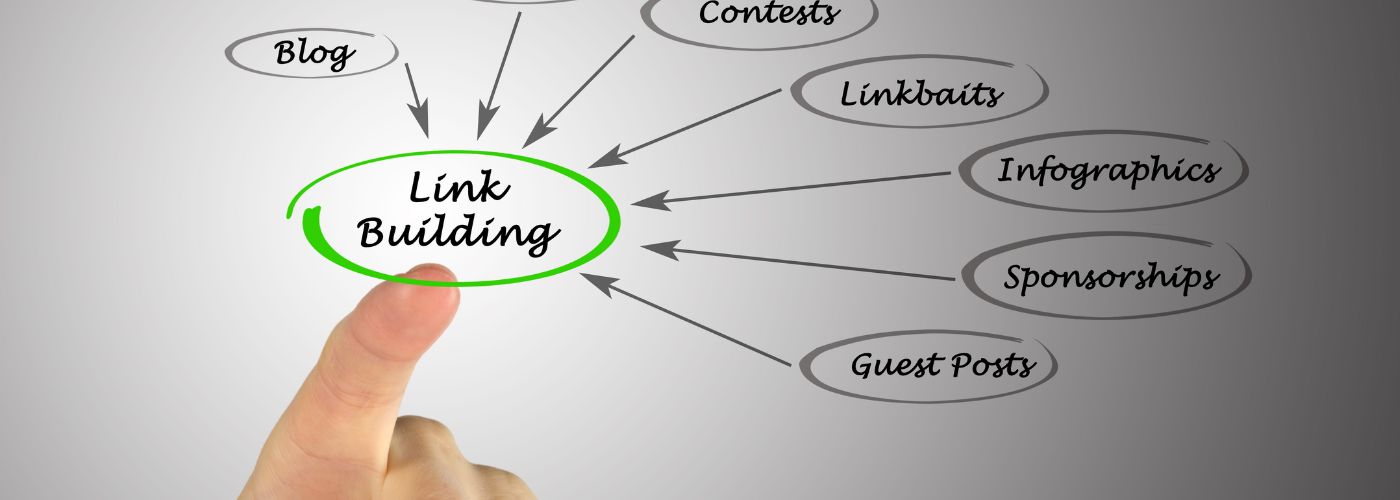Internal linking is a fundamental aspect of website optimization that often goes unnoticed by many online businesses and website owners. While external links are crucial for boosting search engine rankings, internal links play an equally important role in enhancing user experience and driving organic traffic to different pages within a website. We’ll be deep diving into what is internal linking and how it impacts a website.
How Do Internal Links Work?
Internal links are an essential component of any website’s architecture, providing a way to connect different pages within the same domain. These links work by creating clickable connections that guide users from one page to another, enhancing navigation and improving user experience.
When properly implemented, internal links can also boost search engine optimization (SEO) efforts by helping search engines understand the structure and hierarchy of a website.
The mechanics behind internal links are relatively straightforward. Web developers add HTML code to anchor text or images on a webpage that directs users to another page within the same website when clicked.
Anchor text is the clickable text or image that is hyperlinked to another webpage. It serves as a reference point, providing users with a brief description of the destination page’s content. The anchor text is crucial for both search engines and users in understanding the context and relevance of the linked page.
This anchor text is typically a relevant keyword or phrase that describes the destination page’s content. By clicking on this optimized anchor text, users can easily navigate between different pages with related information, ultimately helping them find what they are looking for more efficiently.
How Does Internal Linking Help SEO?
Internal linking is a powerful strategy that can greatly enhance the SEO ranking of your website. By creating links between different pages within your site, you are effectively guiding both users and search engine crawlers through your content.
This allows for better indexing and improved visibility on search engine results pages (SERPs). When you incorporate internal links strategically, you enable users to navigate easily through your website and discover more relevant content, increasing their engagement and time spent on your site.
One key benefit of internal linking is its ability to establish a logical hierarchy and structure for your website. By linking from high-authority pages to other related pages, you send signals to search engines about the importance of those linked-to pages.
This helps search engines understand which content is most valuable and relevant, ultimately boosting the ranking potential of these linked-to pages in SERPs.
Another benefit of internal link is that it can improve the overall user experience by providing additional context and information. When users click on internal links within your website, they are directed to related content that expands on the topic they are interested in. This not only helps them find more relevant information but also keeps them engaged and encourages them to explore further.
What Are The Types Of Internal Links?
The two main types of internal links are dofollow links and nofollow links.
Dofollow links, as the name suggests, allow search engines to follow them, passing on link equity or “link juice” from one page to another. These types of links contribute to the overall SEO value of a website by helping search engines understand the site’s structure and hierarchy.
Dofollow links are created by default in most situations, as long as the HTML code does not contain any special attributes such as nofollow.
On the other hand, nofollow links do not pass on any link equity to the linked page. They contain an attribute called nofollow, which tells search engines not to follow that specific link. Nofollow links are often used for advertisements, sponsored content, or user-generated content where webmasters want to prevent unwanted influence on their site’s ranking due to external sources.
Link juice or link equity refers to the authority and credibility passed from one website to another through hyperlinks. When a high-quality website links to another site, it transfers some of its link juice, boosting the recipient’s search rankings and visibility.
On the other hand, if low-quality or spammy websites link to your site, they can potentially harm your ranking. In short, link juice plays a crucial role in determining a website’s online reputation and organic traffic.
Understanding the importance of link juice is vital for anyone involved in SEO strategies. Search engines like Google consider backlinks as one of their top-ranking factors because they indicate trustworthiness and relevance.
What Is A Linking Structure?
A linking structure refers to the way in which different web pages are interconnected through hyperlinks. It is an essential component of website architecture and plays a crucial role in improving user experience, SEO, and overall website performance.
By creating a logical and organized linking structure, websites can ensure that users can easily navigate between pages, find relevant content, and improve their overall browsing experience.
The linking structure of a website consists of both internal links, which connect different pages within the same domain, and external links, which direct users to other websites.
Internal links help establish relationships between various pages on a site and guide users to related or similar content. This not only helps visitors discover more information but also allows search engines to crawl and index different pages effectively.
External links help by providing additional resources and references to users. They can lead to reputable sources, further enhancing the credibility of the website. External links also contribute to SEO ranking, as search engines consider them as indicators of a website’s authority and relevance.
When creating external links, it is crucial for websites to choose reliable and trustworthy sources. Linking to reputable websites not only improves user experience but also signals to search engines that the site provides valuable information.
Overall, linking is very important and is the fundamentals of SEO ranking for websites!



More to Read
Is Affiliate Marketing A Scam?
Have you ever been tempted by promises of easy money through affiliate marketing, only to feel skeptical about its legitimacy? You’re not alone—many people
Apr
SEO Tips For Non-Profits
Are you struggling to get your non-profit noticed in the vast digital landscape? You’re not alone; many organizations face the same challenge. This article
Mar
Is Using AI In Content Marketing Bad?
In a world where algorithms can generate articles faster than a human can type, one must wonder: are we sacrificing authenticity for efficiency? The
Feb